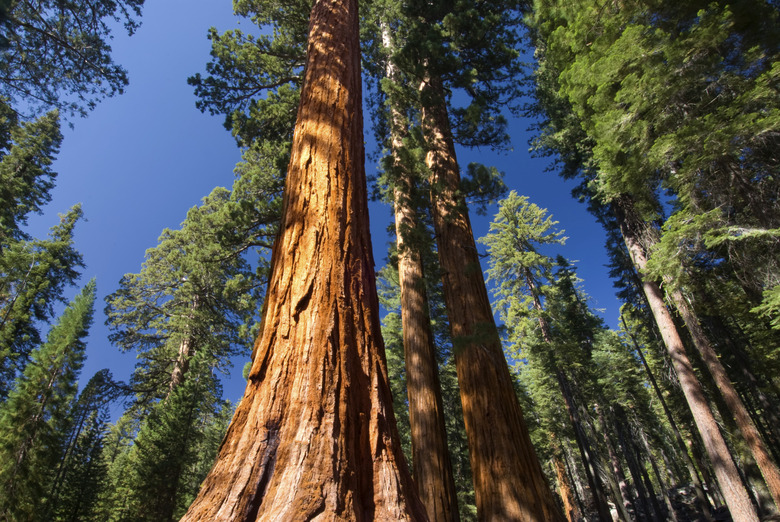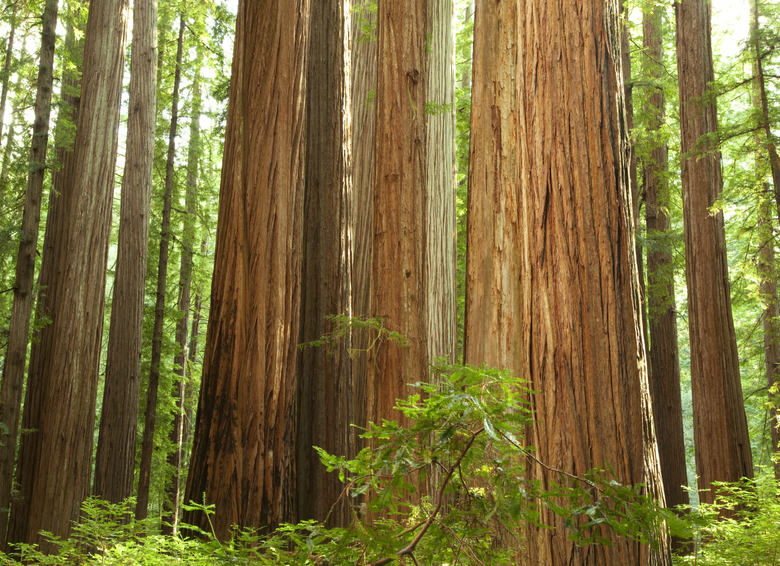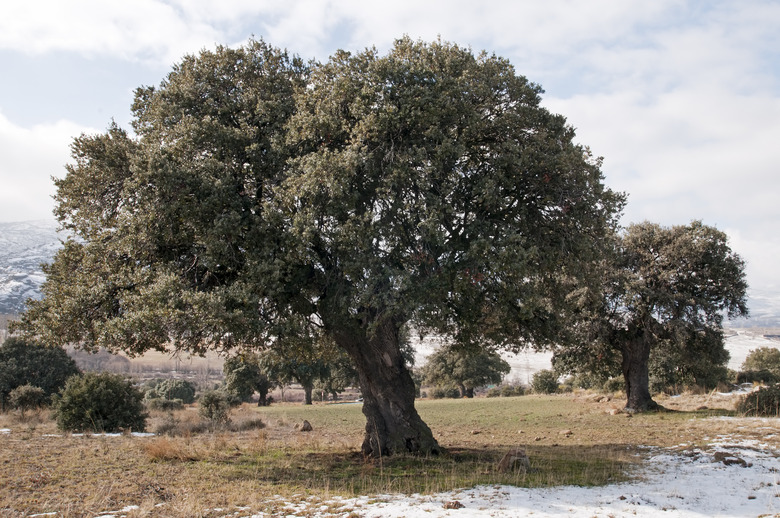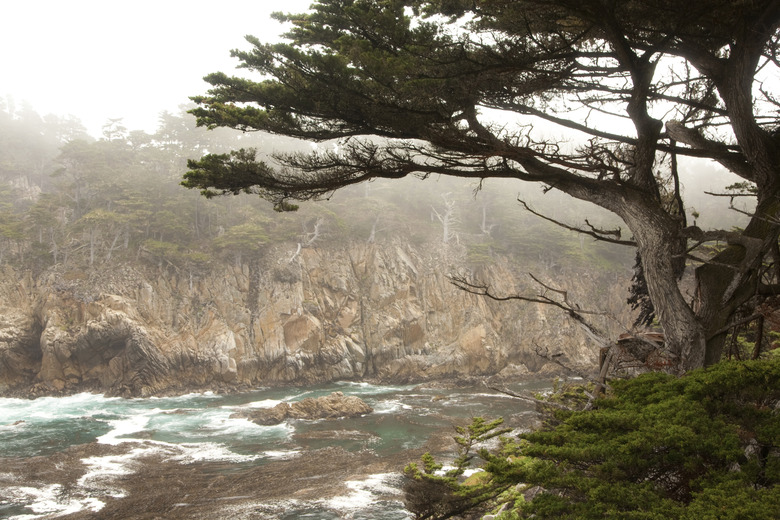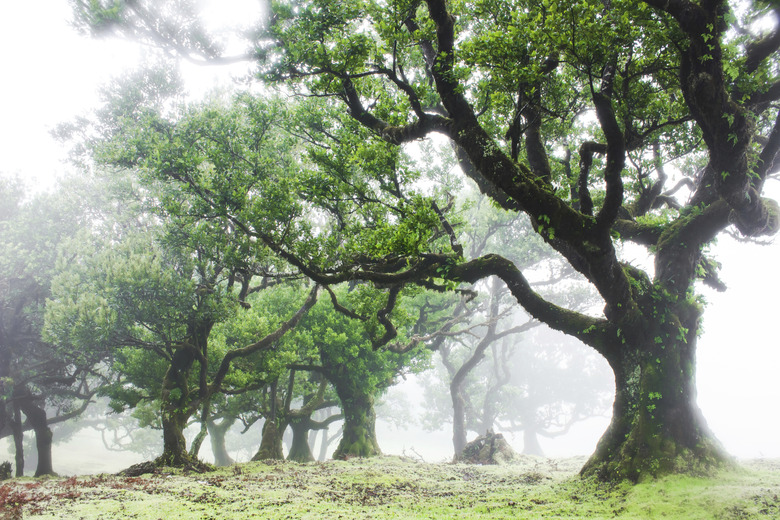California Evergreen Trees
More than 800 miles long and with many varied climates, California is home to an abundant diversity of evergreen trees, of both broad-leafed and needle-leafed types. Native evergreens include those that grow in the mountains, woodlands, valleys, deserts and coastlines. They include conifers such as fir (Abies spp.) as well as broad-leafed evergreens such as the canyon live oak (Quercus chrysolepis) and coast live oak (Quercus agrifolia).
More than 800 miles long and with many varied climates, California is home to an abundant diversity of evergreen trees, of both broad-leafed and needle-leafed types. Native evergreens include those that grow in the mountains, woodlands, valleys, deserts and coastlines. They include conifers such as fir (Abies spp.) as well as broad-leafed evergreens such as the canyon live oak (Quercus chrysolepis) and coast live oak (Quercus agrifolia).
Large and Larger Redwoods
California's state tree, coast redwood (Sequoia sempervirens), reaches up to 100 feet tall, and grows in U.S. Department of Agriculture plant hardiness zones 8 through 10 along the California coast, while giant sequoia (Sequoiadendron giganteum), its close relative, grows on mountain slopes in USDA zones 6 through 9. Giant sequoia is the world's largest living organism, with the largest trees growing more than 250 feet tall — one large specimen has a trunk circumference of 1024 inches and a crown 106 feet wide.
Live Oaks
Evergreen oaks, called live oaks, grow throughout California. Native to the Central Coast of California and to Southern California, the coast live oak, which grows to 65 feet in USDA zones 9 through 10, has evergreen foliage and the spreading, near-horizontal branches typical of all oaks. Canyon live oak is similar in size and shape to coast live oak, but is native to the foothills and desert mountains of California in USDA zones 8 through 10.
- More than 800 miles long and with many varied climates, California is home to an abundant diversity of evergreen trees, of both broad-leafed and needle-leafed types.
- Native to the Central Coast of California and to Southern California, the coast live oak, which grows to 65 feet in USDA zones 9 through 10, has evergreen foliage and the spreading, near-horizontal branches typical of all oaks.
Conifers of All Shapes and Sizes
Windblown branches, sometimes spreading as wide as the tree is high, characterize Monterey cypress (Hesperocyparis macrocarpa), growing on the California coast up to 65 feet in USDA zones 7 through 10. Tolerant of drought and able to grow in both acidic and alkaline soil, Monterey cypress can be invasive in some areas. Native Californian fir trees grow much taller than Monterey cypress, with 200-foot varieties including grand fir (Abies granis), which grows in USDA zones 6 through 9, and noble fir (Abies procera), which grows in USDA zones 6 through 8.
Broad-Leafed Evergreens
A Golden State native, California laurel (Umbellularia californica) grows slowly, eventually reaching up to 65 feet tall in USDA zones 7 through 9. Its strongly scented, yellow-green leaves are not the typical bay leaves found in supermarkets, but you can substitute them for cooking bay leaves. No listing of California native evergreens would be complete without at least one palm tree included: California fan palm (Washingtonia filifera), with 3- to 6-foot fronds perched atop shaggy masses of thatch, grows up to 65 feet tall in USDA zones 9 through 11.
References
- University of California The California Garden Web: What Is My Climate Zone?
- Cal Poly San Luis Obispo Urban Forest Ecosystems Institute: SelecTree — Tree List
- The New Sunset Western Garden Book; Kathleen Norris Brenzel, Editor
- Cal Poly San Luis Obispo Urban Forest Ecosystems Institute: SelecTree — Tree List
- Cal Poly San Luis Obispo Urban Forest Ecosystems Institute: Monterey Cypress
- Cal Poly San Luis Obispo Urban Forest Ecosystems Institute: SelecTree — Tree List
- Cal Poly San Luis Obispo Urban Forest Ecosystems Institute: California Laurel
- Cal Poly San Luis Obispo Urban Forest Ecosystems Institute: California Fan Palm
